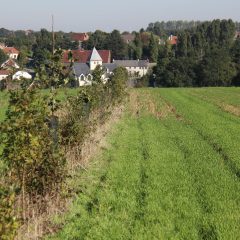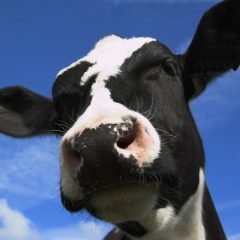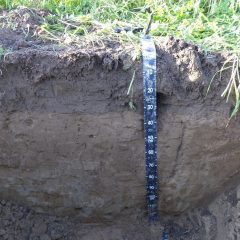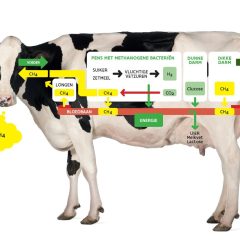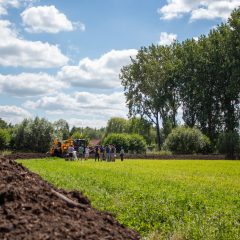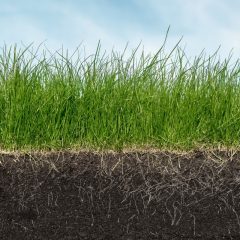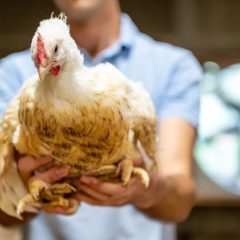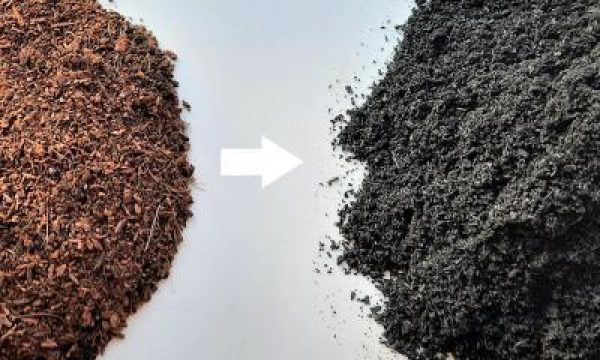Dossier Nitrogen
- Soil
- Nitrogen
- Fertilization
- Ammonia
- Manure
- Greenhouse gases
- Low-emission animal housing
- Air scrubbers and biofilters
- Environment
- Climate change
The element nitrogen (N) is ubiquitous: 78% of the atmosphere is composed of nitrogen gas (N2) and it is a building block of all life on earth. No wonder it is an essential element in plant fertilizers and animal feed. Yet it also causes some intractable environmental problems.
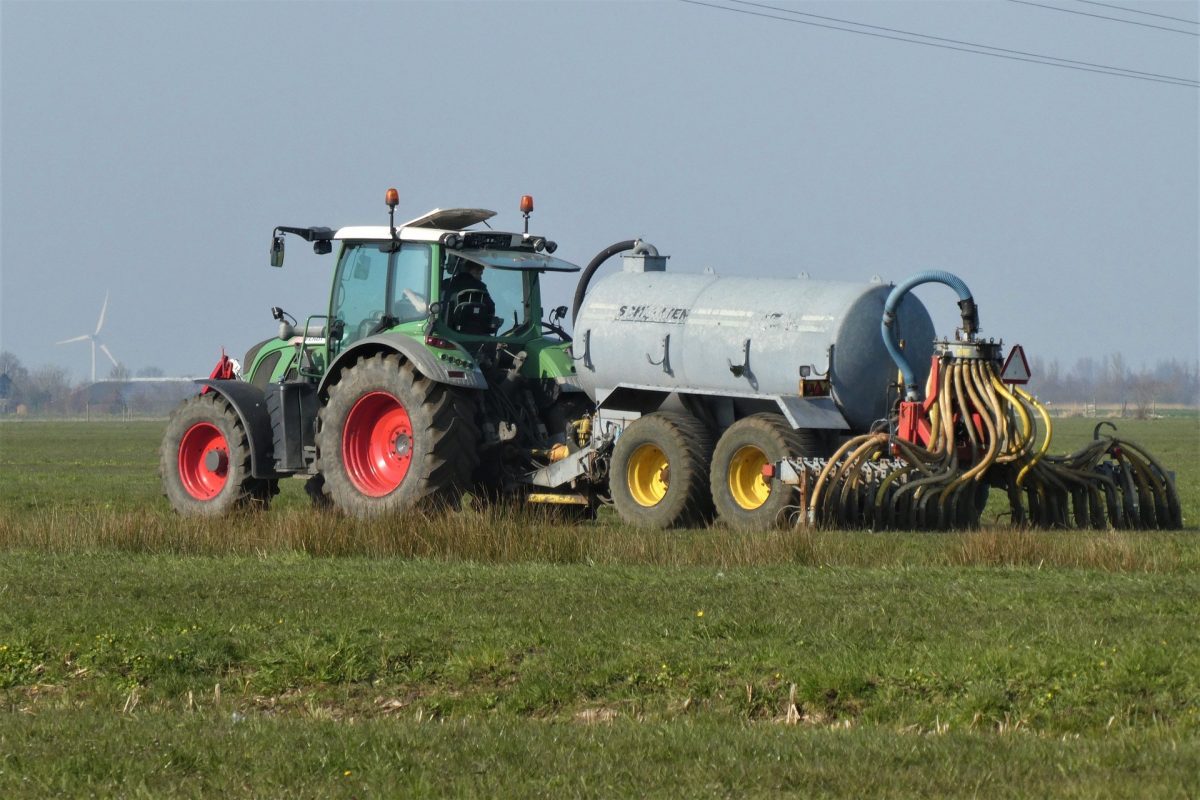
What does ILVO do?
-
 ILVO investigates measures that can lead to a reduction of ammonia emissions from agriculture.
ILVO investigates measures that can lead to a reduction of ammonia emissions from agriculture. -
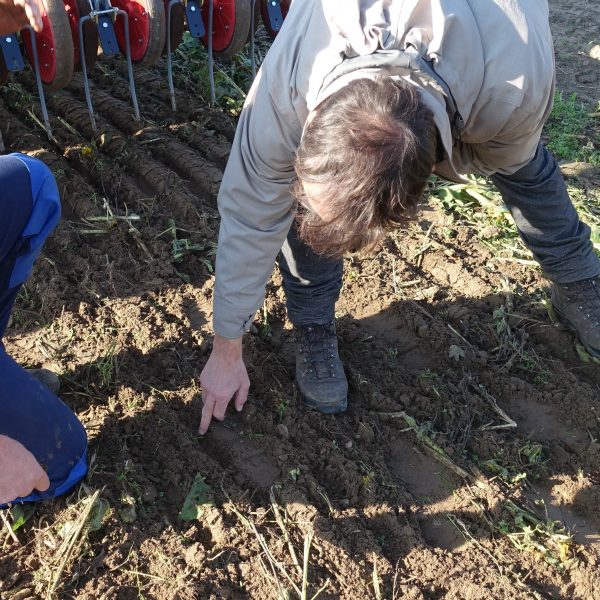 ILVO investigates how nutrient cycles, including nitrogen, can be closed with minimal losses to the environment.
ILVO investigates how nutrient cycles, including nitrogen, can be closed with minimal losses to the environment. -
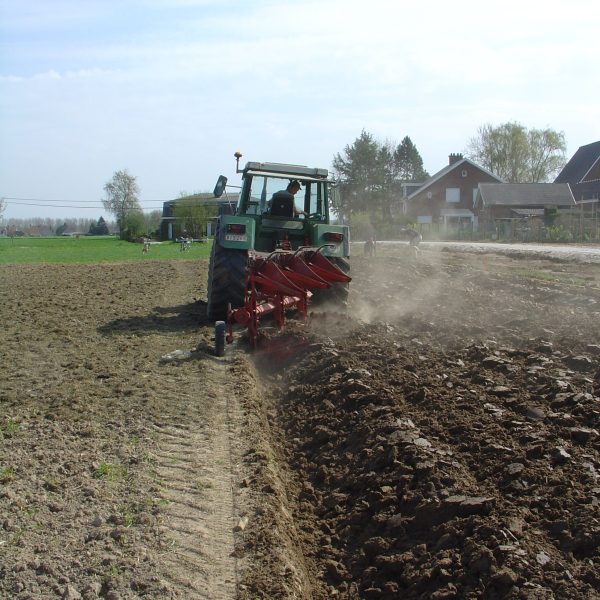 ILVO investigates how the climate impact of agriculture can be reduced without problem shifting to nitrogen pollution.
ILVO investigates how the climate impact of agriculture can be reduced without problem shifting to nitrogen pollution.
The nitrogen cycle
The nitrogen gas (N2) that makes up 78% of the air cannot be used in that form by living organisms. To be available as a nutrient, it must be converted into a reactive form. The main natural sources of reactive nitrogen are biological nitrogen fixation in soils and oceans, wildfires, and lightning. The reactive nitrogen circulates in the environment, from one organism to another, and through different environmental compartments such as soil, water and air. Eventually, it is converted back to nitrogen gas by bacteria. This process is called the nitrogen cycle.
Relatively recently in historical terms, there has been an increase in the formation of reactive nitrogen, through the production of ammonia (NH3) for fertilizer, among other things, and through the formation of nitrogen oxides (NOx) from combustion processes (energy, industry and transportation). About twice as much reactive nitrogen is now formed annually as would be without human intervention.
Effect of excessive nitrogen
As more reactive nitrogen is formed, there are also more nitrogen losses to the environment. A high concentration of nitrate (NO3- ) in groundwater and surface water can have a negative impact on drinking water quality. Together with phosphates, it causes toxic algal blooms and biodiversity loss in watercourses and coastal areas (eutrophication). Nitrogen oxides (NOx) and ammonia (NH3) are air pollutants in themselves that also contribute to the formation of particulate matter and ozone. In addition, these substances have a fertilizing effect on nature, affecting nitrogen-sensitive habitats. Nitrogen pollution also contributes to climate change: nitrous oxide (N2O) is a powerful greenhouse gas.
Nitrogen and agriculture
Because agriculture is an economic activity that largely takes place in an open system that interacts with soil, water and air, it is an important contributor to nitrogen pollution. Because the system is open, emissons reduction in agriculture is more challenging than in other sectors. In addition, there is also a risk of problem shifting: a reduction in emissions of one substance (e.g., ammonia) is sometimes accompanied by an increase in emissions of another (e.g., nitrous oxide). The nitrogen efficiency of food production is therefore of crucial importance. It is defined as the ratio of nitrogen in the final product (the crop, meat, milk, etc.) to the nitrogen in the input (the fertilizers or feed). The higher the nitrogen efficiency, the less nitrogen is lost to the environment.
Ammonia
Agriculture has a small share in nitrogen oxide (NOx) emissions, including from tractors, but a large share in ammonia (NH3) emissions. The main sources of ammonia emissions are barns, manure storage, field application of manure, and manure processing. Ammonia is a major contributor to nitrogen deposition in nature reserves. To achieve the European nature goals, it is therefore important that the emission of ammonia decreases. The most important measures to reduce ammonia emissions are as follows:
- Feeding measures: supplements in feed, reducing protein content in feed;
- Animal housing: low ammonia emission stall systems and floors, air scrubbers;
- Manure storage: covering manure, acidification of manure;
- Manure application: manure separation, low emission manure application, reduced urea fertilizers, urease inhibitors.
Finally, landscape elements, such as hedges and rows of trees can trap ammonia, reducing ammonia precipitation in protected natural areas.
Nitrate
Nitrate (NO3-) leaching from fields and pastures can affect groundwater quality and - together with phosphate losses - causes excessive nutrient richness (eutrophication) in watercourses. Nitrate leaching is a complex problem, which depends among others on the soil type, weather conditions and crop choice. In any case, the correct application of manure and fertilizers is important to limit nitrate losses:
- Right dose: a dose that does not cause unnecessary nitrogen losses, but is sufficient for optimal crop yield;
- Right fertilizer type: choice of fertilizer type or fertilizer that best meets the needs of the crop and is compatible with soil properties;
- Right timing: fertilize at the time when the plant needs the nitrogen (and phosphorus), and at a time when weather conditions are favorable;
- Right fertilization technique: low emission techniques are better to reduce general nitrogen losses, or use precision methods such as row and band fertilization;
- Right location: take into account soil properties and location in relation to watercourses.
There are also a number of other measures a farmer can take, such as sowing green cover crops after the main crop. These green cover crops, such as yellow mustard, phacelia and leaf radish, all trap nitrogen: they take up the nitrogen that remains in the soil after the main crop. At the beginning of the next season they can be plowed under, where they also have a beneficial effect on the carbon content of the soil.
Nitrous oxide
The Global Warming Potential (GWP) of nitrous oxide over a 100-year time horizon is 273 times that of carbon dioxide (CO2). In other words, it is a very powerful greenhouse gas. Most nitrous oxide is released through the bacterial conversion of nitrate present in the soil. Measures that limit nitrate leaching also have a favorable impact on nitrous oxide emissions. In addition, nitrous oxide is also released from manure storage, which can be reduced by covering the manure. Unfortunately, problem shifting sometimes occurs. An example is deep injection of manure, which has a reducing effect on ammonia emissions but increases nitrous oxide emissions.
Research projects
